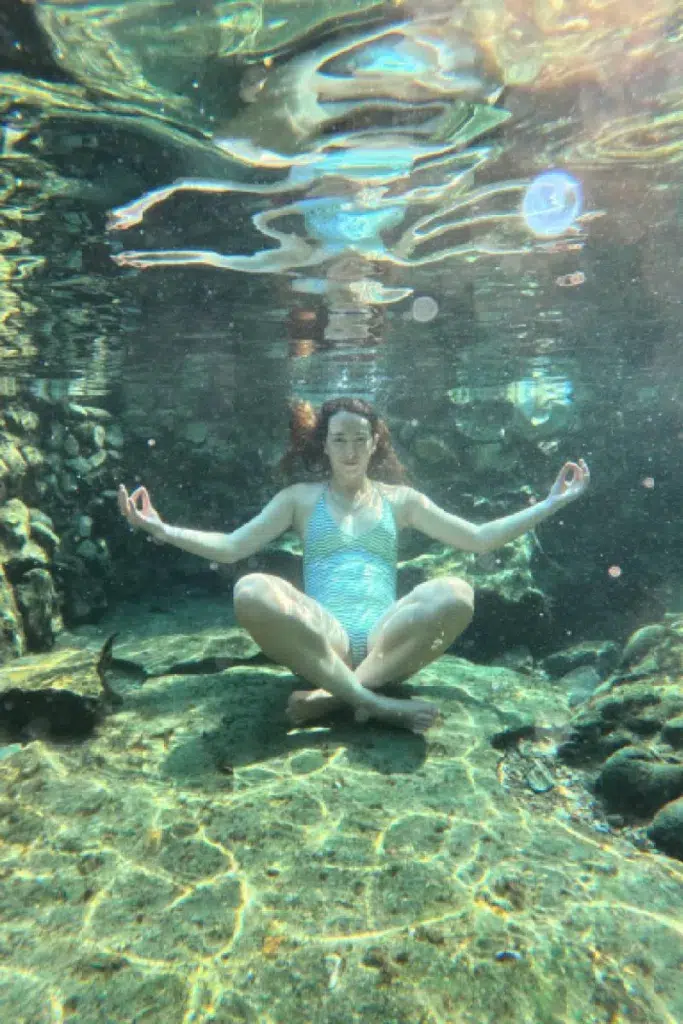What is mindfulness? A short guide for beginners
- Noa

Table of Contents
What is mindfulness? And how do you practice it for the first time?
First of all, it is important to understand that starting to practice mindfulness is like starting to learn any other skill. Patience is an important tool here. Everyone has their own pace and the path that suits them. Although practicing mindfulness has many benefits, it is recommended not to set a goal. The path is what is interesting in the practice – and it is full of surprises.
What are the benefits of mindfulness?
First, being present in the present and not in the past actually reduces stress. This is because our brains are preoccupied with what is happening right now instead of worrying about the future or analyzing the past. Also, fear is always related to something that could happen in the future. In other words, if we are preoccupied with the present, why would we feel fear?
When we practice mindfulness, we activate our parasympathetic system. This system operates in a relaxed state, and then the body knows that it can invest energy in routine activities such as digestion, balancing heart activity, controlling hormones, and so on. On the other hand, there is the sympathetic system that operates during times of stress in order to invest all its energy in order to get us out of the dangerous situation. In modern life, we use the sympathetic system more than we should because we simply experience a lot of stress during our daily routine. Mindfulness helps us activate the parasympathetic system. In other words, our body can invest more energy in other systems, which improves heart function, blood pressure, sleep quality, digestion, hormonal balance, and much more. You can read more in a scientific study conducted in 2009.
How do you practice mindfulness in daily activities?
In fact, every action we do can be more present. To be present in action, we can simply think about what we are doing. If you are cutting vegetables right now, we can think about the way we cut, the color of the vegetables, their texture, and the smell we smell while doing it.
We can use our senses to connect with the present. That is, to think about what we see, hear, smell, feel, or taste at that moment.
A small exercise you can do to practice mindfulness is especially helpful during times of stress: mentally or out loud note five things you see, four things you hear, three things you smell, two things you feel, and one thing you taste.
Thoughts will still jump back and forth. However, it is worth gently bringing the focus back for a moment without judging ourselves.
Two methods for practicing meditation for the first time
The first time I learned to practice meditation was in a monastery in Myanmar, which I wrote about a bit about in my article.
At the monastery they taught one method of practicing, of course there are dozens of other methods. The method is very simple, which is why I chose to write about it here.
First, sit in a comfortable position. This could be on the floor, in a chair, or lying down. Then take a few deep breaths into your stomach, then inhale and exhale through your nose (if possible) while focusing on the sensation of the air going in and out of the area below your nostrils or in the roof of your nose – wherever is easiest for you. You can say to yourself inhale-exhale as you do so.
To start, I recommend setting a timer for five minutes and practicing every day, preferably in the morning or before bed.
If you have more time, the method continues like this: After a few minutes of concentrating on the sensation of breathing through your nose, concentrate only on the air entering your respiratory system. After a few more minutes, concentrate only on the air leaving your respiratory system. Then shift your focus to the entire respiratory system. If you lose concentration, you can start again from the beginning.
Another relatively easy method is to simply inhale one, exhale two. Continue like this until you reach ten, then repeat it again.
It is important to emphasize that it is perfectly okay for thoughts to come and go during practice. The goal is not to get rid of the thoughts but simply to be aware of them. When a thought pops up, gently bring your focus back to the practice with compassion and the understanding that it is okay and natural.
Ways to incorporate mindfulness into daily life
It is best to practice meditation first thing in the morning and/or before bed. This is because our brains are cleanest in the morning and meditation will contribute to a vital and optimistic day. On the other hand, meditation at night will help you relax and end the day in a positive way and improve the quality of your sleep. You can put on pleasant music, such as frequencies, and practice breathing, or alternatively practice guided meditation, for example on YouTube or through an app.
To enjoy the experience as much as possible, I recommend that you avoid judging and comparing the process to yourself or others. This is because everyone goes through a different process and every day we are a little different from the day before. There are days when your head is troubled and it is very difficult to concentrate, and there are days when your head is calm and it is easy to concentrate. Either way, the practice will benefit you just as much.

